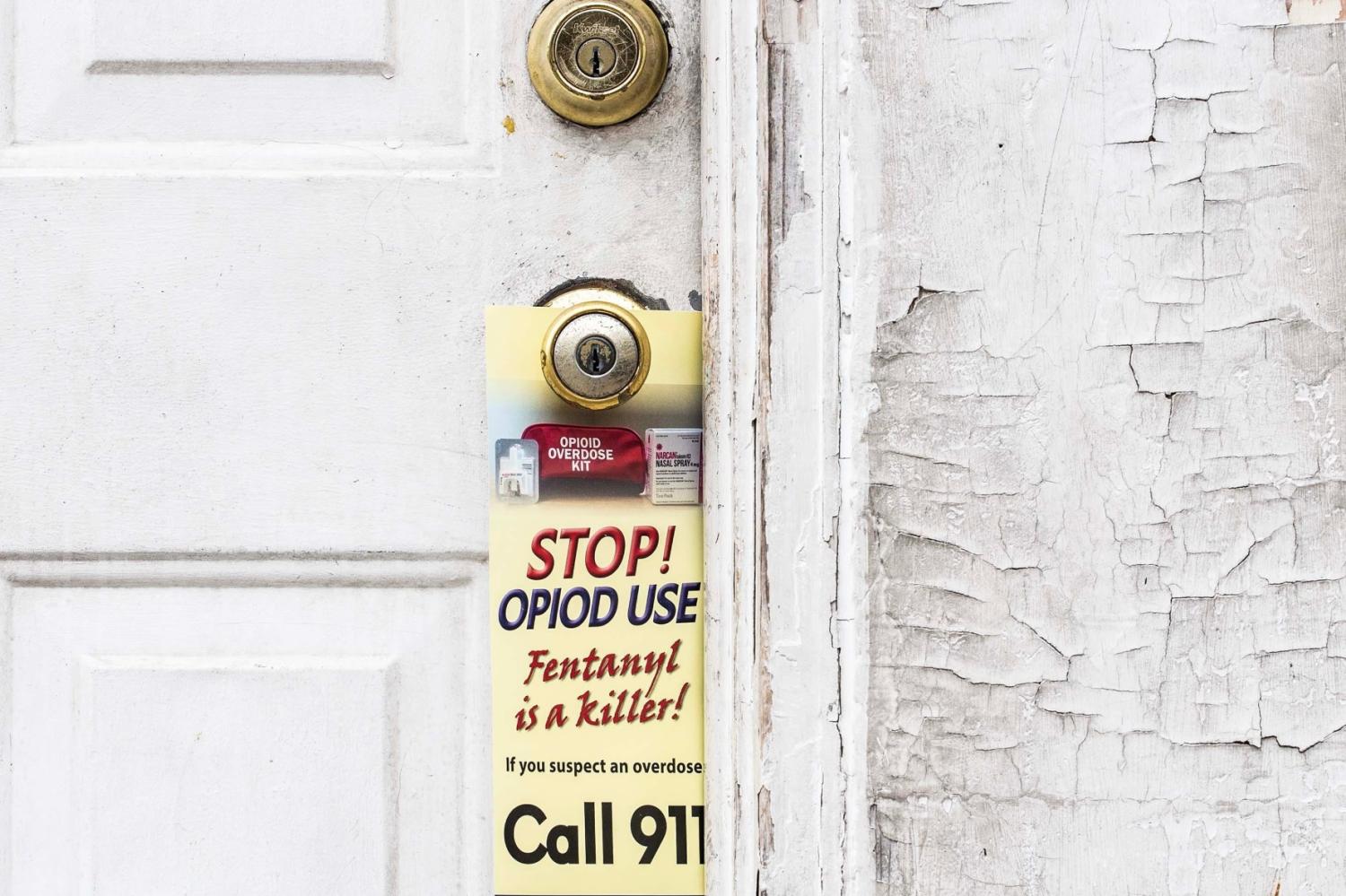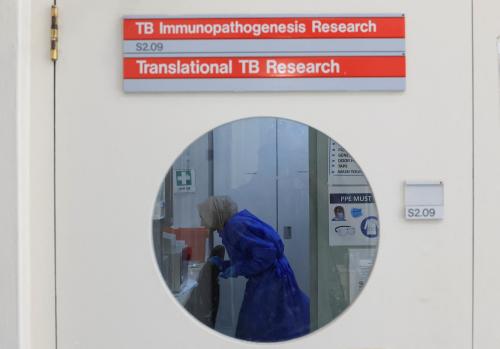For two decades, the United States has been reeling from a severe opioid epidemic that a decade ago became the world’s most lethal drug epidemic ever. As the synthetic opioid fentanyl and its analogs spread through the U.S. illicit drug market and became mixed into all kinds of drugs, including stimulants, deaths skyrocketed. Over the past 20 years, the number of Americans dying from drug overdose surpassed the total number of American soldiers dying in all U.S. wars since World War II. By 2020, at least 2.7 million Americans had an opioid use disorder (a number that is likely an undercount) and fentanyl became the number one killer of Americans between the ages of 18 and 45. In an unprecedented way, drug overdose deaths among people over 65 years old also skyrocketed, quadrupling from three per 100,000 in 2002 to 12 per 100,000 in 2021. In 2021, U.S. drug overdose death rates topped a devastating 100,000 Americans a year, with 106,699 dying that year. 2022 was even worse.
It was only in 2023 that lethal overdose rates finally came down slightly, a trend that seems to have accelerated significantly throughout 2024.
Has the United States finally reached the end of the tunnel with lethal drug overdoses declining and hopefully remaining at much-reduced levels? What accounts for reductions in deadly overdoses and how can they be sustained? And can the rest of the world avoid a similar explosion in drug deaths even as a synthetic drugs revolution is reshaping global drug and crime markets as well as countries’ drug and foreign policies?
With the opioid and fentanyl epidemics brutalizing the United States, the Brookings Institution has undertaken extensive research into the causes and extent of the public health crisis and its security dimensions to develop effective policy responses. Building on the Brookings 2020 project, “The opioid crisis in America: Domestic and international dimensions,” the current project—“The fentanyl epidemic in North America and the global reach of synthetic opioids”—examines changes in the U.S. and other drug markets, including the drivers of lethality, as well as evaluates a wide range of policy responses in the United States and abroad.
To explore and assess both the U.S. context and policies and international drug supply, the project brings together top experts from a range of disciplines from the United States and abroad. Paying particular attention to the most vulnerable and disproportionately affected social groups, the resulting 11 project papers recommend how to adjust policy responses to effectively mitigate the fentanyl epidemic’s various harms, particularly its lethality. This project is focused on informing a wide range of policymakers, other actors who are involved in responding to synthetic opioids, and members of the public who are coping with synthetic opioids in their daily lives. It also includes other components in addition to the policy papers, including a Brookings Institution podcast, “The Killing Drugs: Synthetic Opioids around the World,” that I host.
Having an accurate picture of the U.S. drug market and of evolving drug use patterns is fundamental for assessing policy effectiveness. In a paper that explores the changes in the U.S. consumption of fentanyl, methamphetamine, heroin, and cocaine over the past two decades, Greg Midgette and Peter Reuter provide such foundational understanding. Also emphasizing the increasingly deadly potency of methamphetamine sold in the United States, Midgette and Reuter highlight that the lethality of drug use in the United States had been steadily rising even before synthetic opioids entered the drug supply.
Brookings’ previous series on opioids and now this current one on fentanyl have deliberately paid special attention to the impacts of drug use and drug policies on groups that are highly vulnerable, disproportionally affected, or neglected in policy analysis. In the opioid series, N. Jia Ahmad, Joshua M. Sharfstein, and Paul H. Wise discussed how best to support women and mothers with opioid use disorder, emphatically noting the harms caused by a policy of removing children from mothers using drugs. John Hudak analyzed the increased patterns of opioid use among U.S. military veterans and the ways to mitigate that aspect of the opioid crisis. In the current series, amidst an epidemic that has hit all U.S. communities and social groups regardless of race or wealth, we selected the group disproportionately afflicted by the highest overdose death rates: American Indian and Alaska Native (AI/AN) communities. AI/AN individuals experience mortality overdose rates that are multiple times those of white people. As Philomena Kebec, a member of the Bad River Band of Lake Superior Chippewa Indians, explains in her paper, what lies behind fentanyl’s horrendous devastation of AI/AN communities are both current inequities and historic injustice and oppression, all of which need to be factored into policy responses.
Indeed, the question of how to improve policies lies at the core of the fentanyl series’ research papers. In his paper, Jonathan P. Caulkins lays out the intellectual priors with which policymakers, scholars, and the public can approach drug policy. He discusses three different intellectual frameworks for thinking about counternarcotic strategies: one that is strongly focused on suppressing the supply of drugs, one that focuses on addressing demand, and one that advocates for providing a safe legal supply of illicit drugs. In addition to laying out the pros and cons of each approach, Caulkins also unpacks the approaches’ expected goals and tasks. He stresses, for example, that the purpose of drug law enforcement is not just the suppression of supply but also the suppression of violence in criminal markets. He further highlights the varied effectiveness of policies with respect to each objective.
Other papers in the project delve in detail into various policies applied in the United States to the fentanyl and opioid epidemics. Nicole Gastala, Harold Pollack, Basmatee Boodram, Mai Tuyet Pho, and Mary Beth Shapley analyze various aspects of opioid use treatment in the United States. They evaluate the effectiveness of various approaches and the changes U.S. policies and U.S. health care systems underwent in response to the opioid and fentanyl epidemics. They also analyze a wide set of barriers to the delivery of effective evidence-based treatment, such as medication-assisted treatment, including inadequate insurance coverage and persistent stigma around drug use.
Regina LaBelle and David R. Holtgrave examine the adoption and effectiveness of harm reduction approaches, a policy approach that has long been taboo in the United States while extensively embraced in Canada and Europe. In their previous policymaking role in the Biden administration, LaBelle and Holtgrave helped integrate harm reduction approaches into U.S. federal policies. In their paper, they step back to assess the impacts of the various harm reduction modalities, their variation across U.S. states, and the challenges they face.
Over the past four years, a seismic departure from decades-long U.S. drug policies was the emergence of decriminalization policies in the U.S. Pacific Northwest. Also implemented in Canada’s British Columbia, these policies decriminalized the possession of and nonviolent dealing of hard drugs and led to the emergence of open-air drug markets. In his paper, Keith Humphreys examines the political and social context that produced such dramatic policy shifts in the Pacific Northwest, the design of the decriminalization policies there, and the ways in which those policies differed from drug policies in Portugal, a country long considered a model for decriminalization. Humphreys also analyzes the drug and crime outcomes that followed the policy shifts and the reasons that there were significant reversals of decriminalization approaches and intensified law enforcement by the spring of 2024.
Domestic drug law enforcement is the policy tool that Roland Neil and Beau Kilmer explore in their paper. They trace how various components of U.S. criminal justice interventions changed as a result of the fentanyl epidemic and assess the effectiveness of various criminal justice innovations, such as the promotion of Good Samaritan laws and the imposition of murder charges on dealers of fentanyl doses that resulted in overdose deaths.
The fentanyl series also intensively explores the international supply of fentanyl to the United States and the spread of synthetic opioids beyond North America. In my two papers, I analyze the role of criminal networks in China and Mexico in the production and trafficking of fentanyl as well as in money laundering, highlighting the rise of Chinese money laundering networks in the United States and Europe. I also analyze in detail U.S. policies toward China over the past decade and the evolution of U.S.-China bilateral counternarcotics cooperation. I identify the obstacles to that cooperation and locate it within the U.S.-China geostrategic relationship. In my paper on China, I also trace India’s evolving participation in the supply of synthetic drugs and their precursors and U.S.-India counternarcotics cooperation.
In my paper on Mexico, I describe how the country’s fentanyl production is connected to precursor supply in China and fentanyl trafficking to the United States. I also detail the evolution of U.S.-Mexico counternarcotics cooperation in recent years and the way it has been constrained by Washington’s reliance on Mexico for the suppression of migrant flows into the United States. By charting the disastrous effects of the Andrés Manuel López Obrador administration’s security policies, I also reveal Mexican criminal groups’ growing and brazen power in Mexico and their infiltration into and takeover of legal economies in Mexican territories and institutions. With Mexico on the verge of becoming a narco-state, I explain how criminality in the country affects a broad range of U.S. security and economic interests. I also explore opportunities for renewed security cooperation under the Claudia Sheinbaum administration.
With respect to both Mexico and China, I also outline the incoming Trump administration’s likely policies regarding fentanyl and precursor flows and analyze how the administration’s larger agenda toward these two countries will likely intersect with and impact counternarcotics cooperation.
No country has suffered as many drug overdose deaths as the United States. However, despite very different drug policies, including a strong embrace of harm reduction measures in British Columbia, Canada too has been severely affected by the fentanyl epidemic. And although former Mexican President López Obrador falsely claimed that no fentanyl was consumed in Mexico, fentanyl use in the country is, in fact, spreading. Indeed, the increase in use is being driven by Mexican cartels paying their employees in fentanyl instead of cash, and the latter then need to create local retail markets to generate cash liquidity.
However, synthetic opioids are no longer confined to recreational and illicit drug markets in North America. As of this writing, at least 22 countries in Europe have detected the presence of illicit synthetic opioids, and this number is rapidly increasing. Not just fentanyl-type opioids, but also the even more powerful nitazines, another type of synthetic opioid, are being shipped to Europe from China and India. Some synthetic opioid markets in Europe are well-established—most notoriously Estonia’s fentanyl market that emerged in the early 2000s in response to the Taliban’s first ban on opium poppy in Afghanistan in 1999. Other places in Europe are being affected by synthetic opioids for the first time. In some European countries, such as the United Kingdom, synthetic opioids are spreading through retail drug markets and drug deaths are rising. In his paper for this series, Alex Stevens explores Europe’s growing market for synthetic opioids and evaluates both its likely future intensity as well as the readiness of European treatment and harm reduction policies to respond to the increased flows of synthetic opioids.
Although not yet produced in South America, synthetic opioids are also emerging in retail drug markets in the Southern Cone. Unlike in North America, large criminal groups are not yet pumping synthetic opioids into the local drug supply. Nor are synthetic opioids, for now, being supplied by Chinese and Indian trafficking networks, as is the case in Europe. Instead, as Daniel Mejía and Sara García describe in their paper, the fentanyl popping up in the Southern Cone’s drug supply is medical fentanyl that is being diverted into the local illicit retail market by small local criminal networks. Yet Mejía and García warn that the incidence of such diversion and of the mixing of fentanyl into the local drug supply is growing rapidly. With Latin American drug markets traditionally not featuring opioids, many Latin American countries are unprepared to cope with any large supply of illicit synthetic opioids.
The risks and harms of synthetic opioids in the recreational and illicit drug supply will grow significantly if potent criminal groups decide to start supplying them to Europe, Latin America, Africa, and the Asia-Pacific region. Easily and cheaply produced and trafficked, synthetic opioids are enormously advantageous for drug trafficking groups. Tens of thousands of lives are already at risk annually in the United States and Canada as a result of fentanyl and other lethal drugs. So are the well-being of U.S. communities and the strength of the U.S. economy and workforce. Seeking to inform policymakers as well as the broader public, the Brookings series “The fentanyl epidemic in North America and the global reach of synthetic opioids” brings together comprehensive knowledge about the evolving U.S. drug market and the effectiveness of various U.S. drug policies. The series similarly provides important insights about the spread of synthetic opioids in European and Latin American drug markets and provides lessons and recommendations for policymakers beyond North America for confronting the immense risks and harms generated by synthetic opioids and other potent synthetic drugs.
-
Acknowledgements and disclosures
My immense thanks go to Diana Paz García whose multifaceted and indispensable collaboration, including crucial research support, contributed enormously to this paper and the entire project. I would also like to thank Ryan Beane for further invaluable research assistance. I am grateful to the anonymous reviewers for their helpful suggestions and to Adam Lammon for his superb editing of the paper and Rachel Slattery for the terrific layout.
The Brookings Institution is committed to quality, independence, and impact.
We are supported by a diverse array of funders. In line with our values and policies, each Brookings publication represents the sole views of its author(s).





